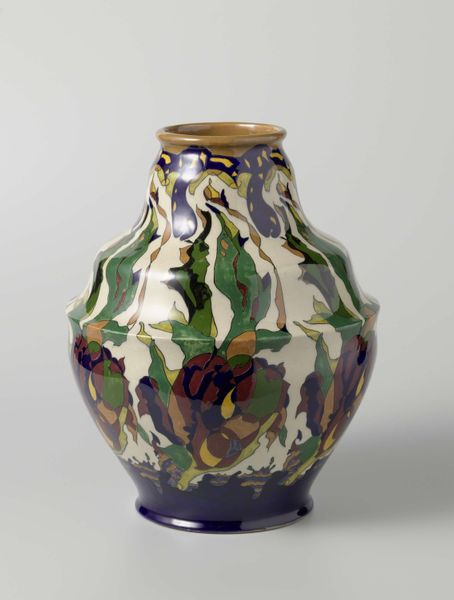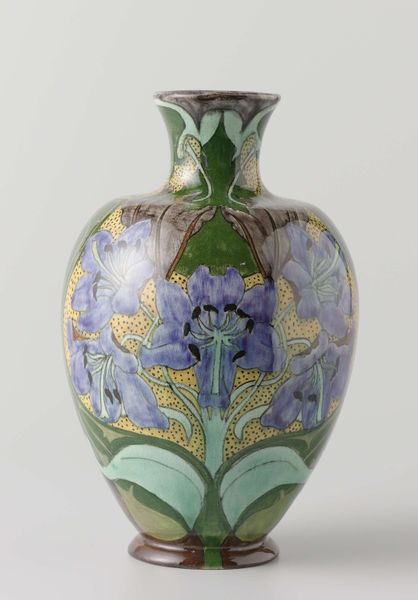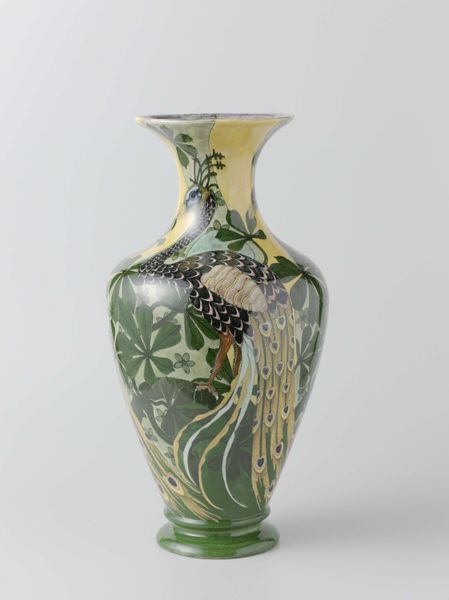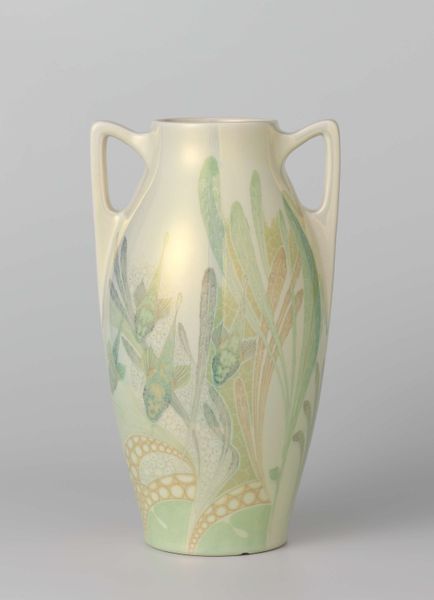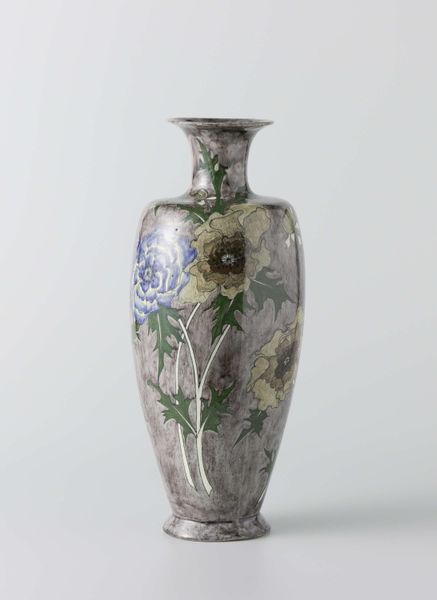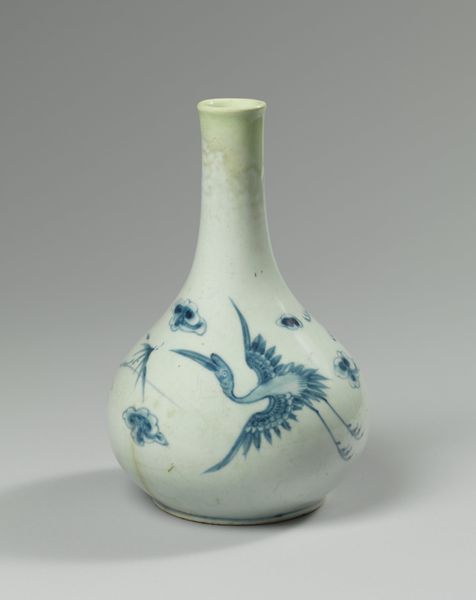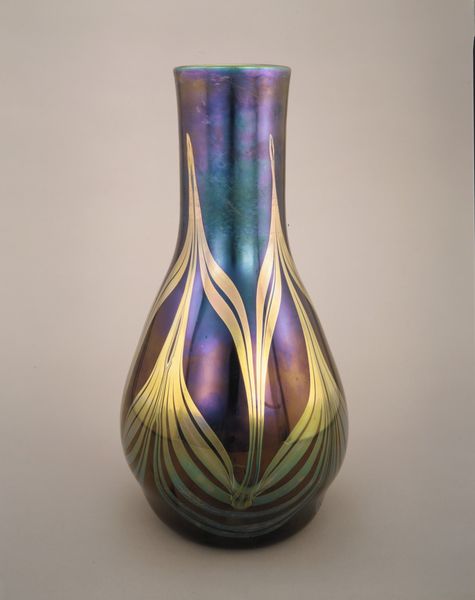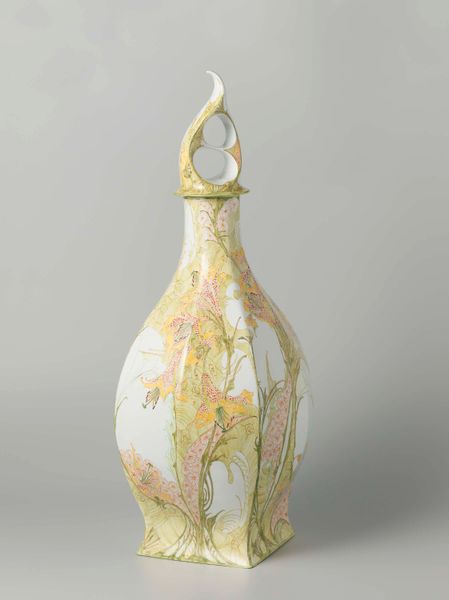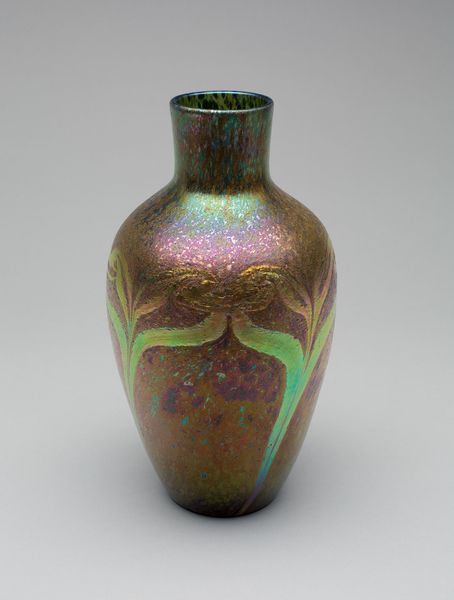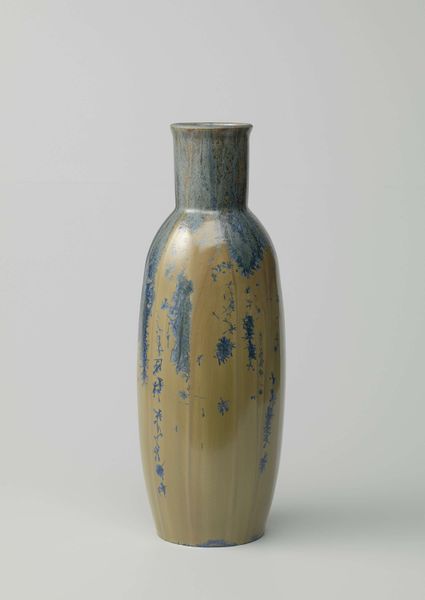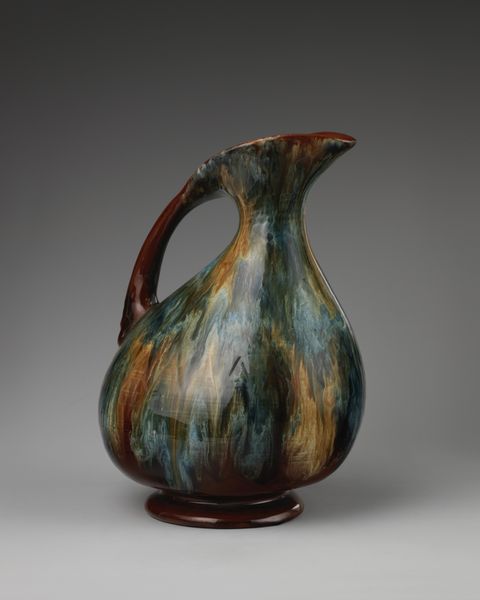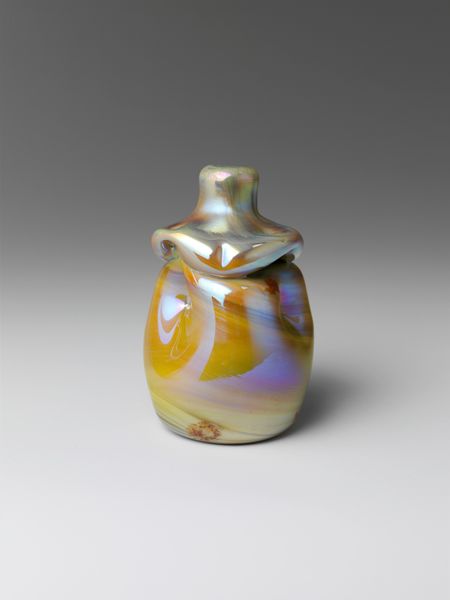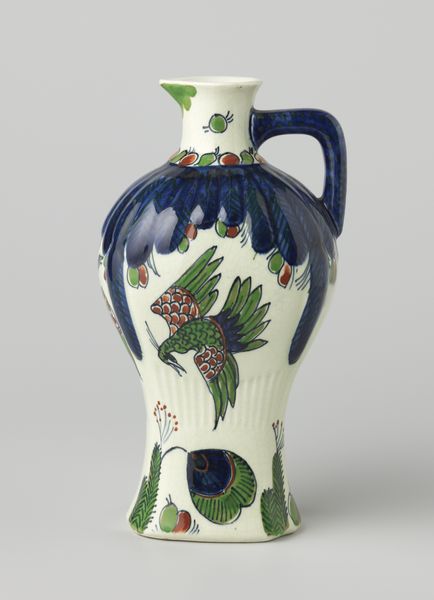
ceramic, earthenware
#
art-nouveau
#
ceramic
#
earthenware
#
stoneware
#
ceramic
#
decorative-art
Dimensions: height 35.0 cm, diameter 27.0 cm
Copyright: Rijks Museum: Open Domain
Curator: Here we have a stoneware jug titled "Kan met beschildering van Clematis Jackmanni," which translates to "Jug with painting of Clematis Jackmanni". It was created between 1895 and 1904 by the firm Wed. N.S.A. Brantjes en Co. Editor: The first thing that strikes me is how organic the piece feels. The floral decoration and sinuous lines give the jug a certain visual energy. It has such a strong sense of movement. Curator: Indeed. Its undulating form and naturalistic motifs are certainly in line with the Art Nouveau movement, which championed organic forms as a break from industrial design. Brantjes was quite a large firm in the Netherlands, mass-producing this type of decorative ceramic to fill homes. Editor: Thinking about that production, I wonder about the skilled labor involved in the glazing and painting. The transfer of this art style onto something made of earthenware must have demanded specialized knowledge and labor processes, right? It almost contradicts the "mass-produced" descriptor. Curator: Certainly, a large workshop would have different specialized roles and divisions of labor. In looking at the firm in its cultural context, it shows how decorative arts, such as painting on pottery, were becoming both more accessible and a crucial element of social life. People adorned their homes, making art and beauty an aspect of everyday existence. Editor: And not just *any* beauty! Clematis flowers represented ingenuity and artifice. What did people think, choosing something that essentially flaunted its own manufactured artfulness? I am thinking that owning something like this also might signal social status. Curator: It points to a wider phenomenon in society—people began seeking refinement and artistry to adorn even their most ordinary objects. In effect, art was less and less of a rarity and more of a consumer good. Editor: It’s funny to think about how a desire for unique craftsmanship leads to larger industries employing specialists in production. To mass produce what had been crafted and handmade has real social consequences for the value of artwork. I feel like it’s also the early development of new market trends that dictate home decor even today. Curator: Well, regardless, I’ve definitely been appreciating the historic trends at play and also, personally, its sheer visual appeal. Editor: And for me, this vase just proves again that any aesthetic is underpinned by hard work, labor practices, and clever marketing!
Comments
No comments
Be the first to comment and join the conversation on the ultimate creative platform.
